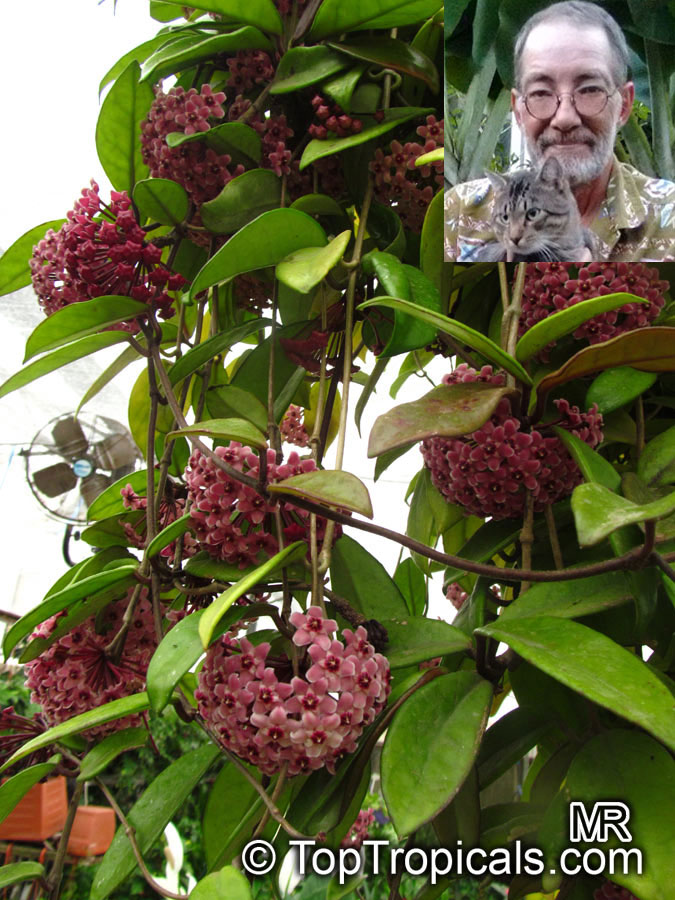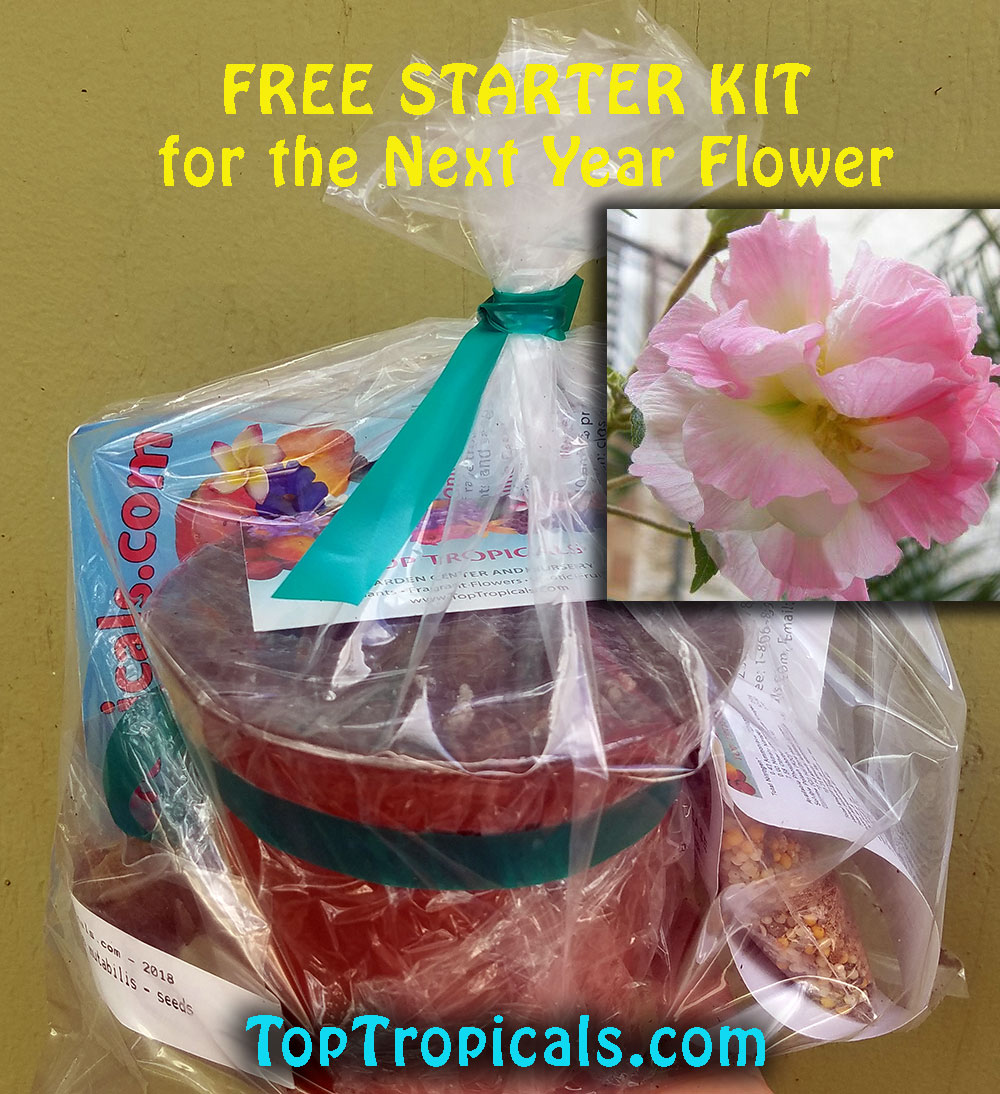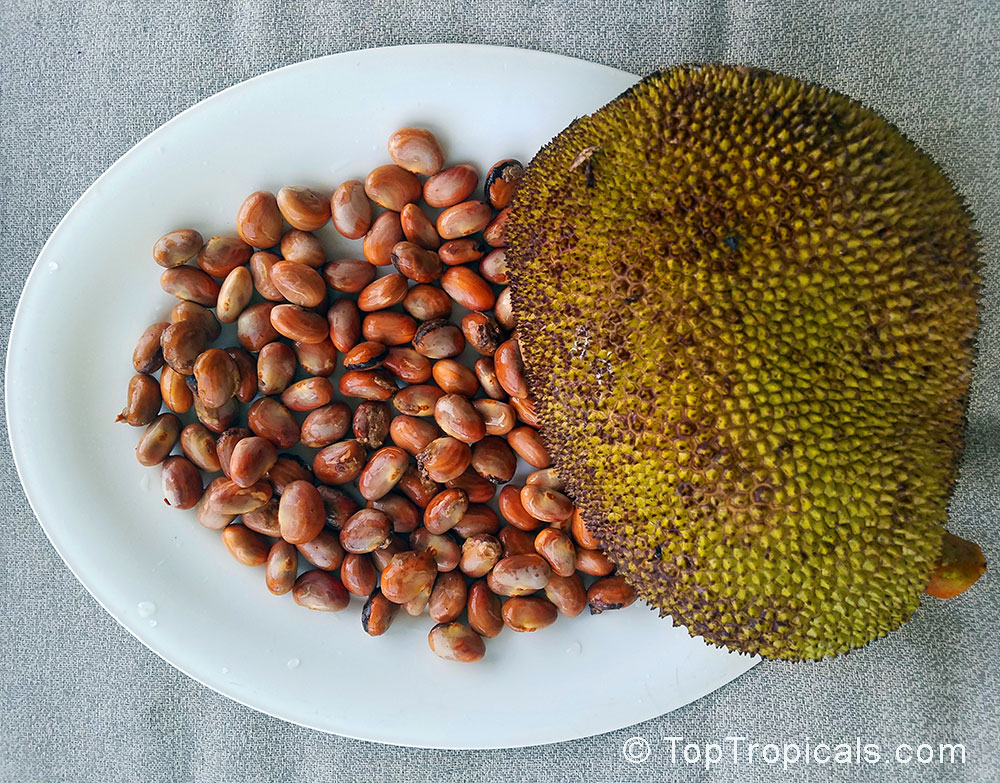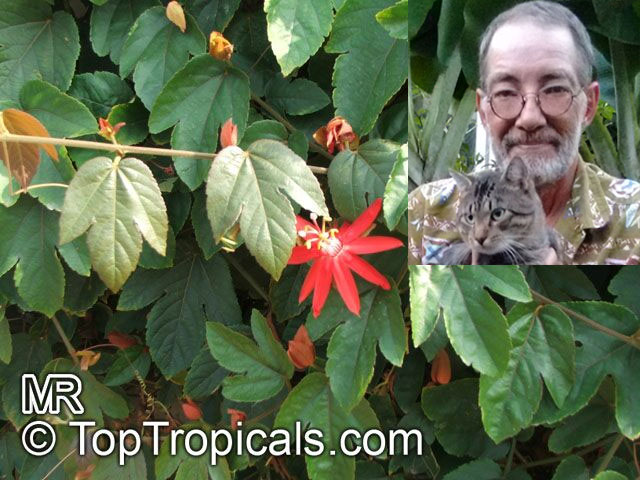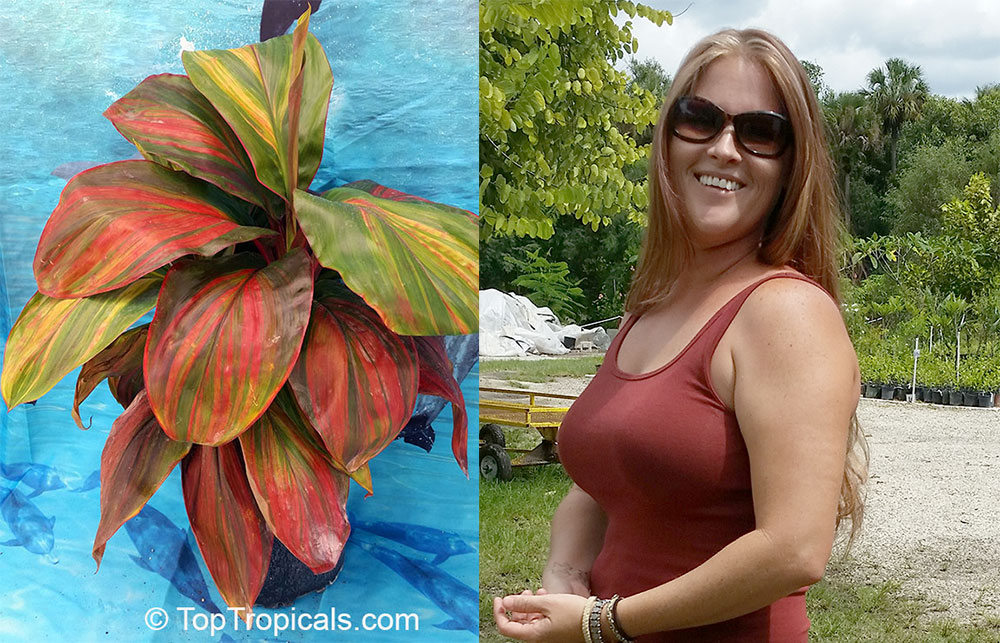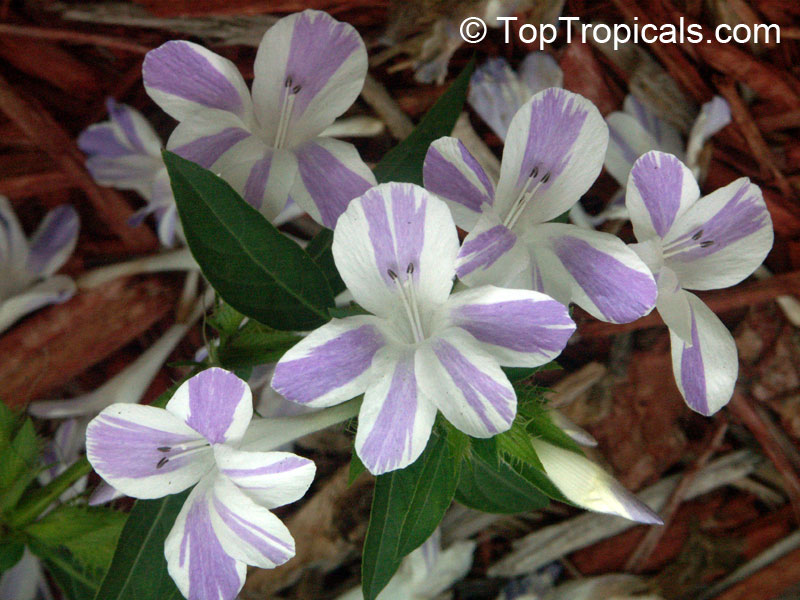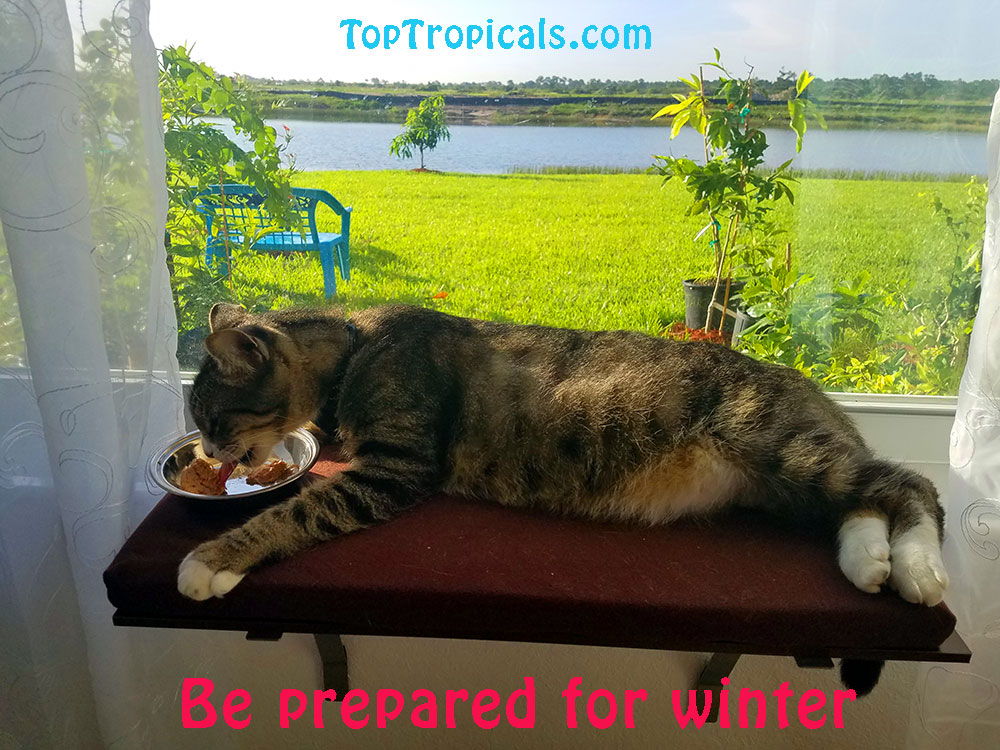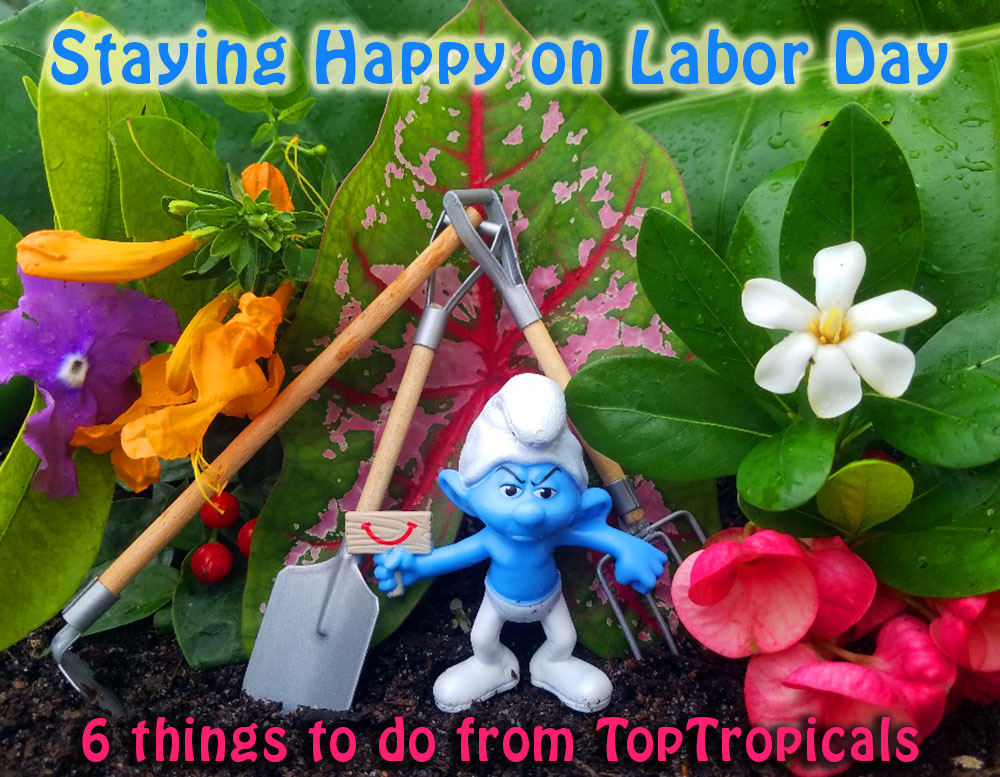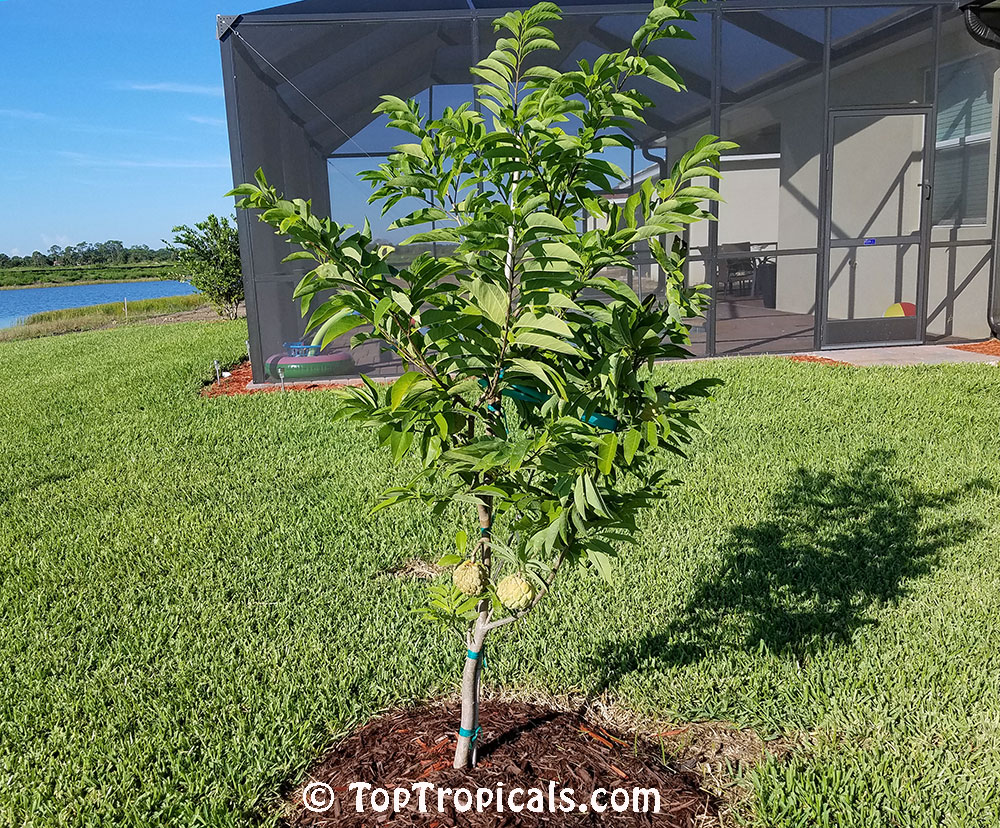Garden Blog - Top Tropicals
Date:
Multi-flowering Hoyas:
from Mark, the Garden Whiz
Q: A few months ago, i was given a Hoya vine. At the time, I was told to not cut-off the flowers but was never told why. However now that it IS flowering, they are so wonderful I would like to. Is there really a reason to not clip them off?
A: Actually, that was very good advise. Unlike most plants we encounter, hoyas develop perennial flower spikes. This means that each spike flowers more than just once! In other words, after the flowers on such a spike have gotten old and fall off, the knobby ended spike remains. Then, after a period of time, that same spike will develop another ring of flower buds. Depending on what kind of hoya it is, these perennial flower spikes may continue to periodically make more flowers for several years! And while the plant will continue to make more of these perennial spikes its whole life, the flowering display becomes better all the time as more and more spikes grow. (By the way, these are technically called "flowering spurs"). So every time a spur might be cut for ornamental purposes, it'll be one less place the vine can flower from in future years.
Date:
FREE STARTER KIT
FREE STARTER KIT with a FREE Happy Mile Card
Sign up for Happy Miles Card and/or attend Harvest Fest and get
a FREE STARTER KIT for the Next Year Flower that
includes:
-
Sunshine S
-
fertilizer
- Literature on Sunshine, seed germination, fertilizer
and Soil
- A pot with professional seed growing mix
- Seeds of Cotton Candy Hibiscus - a
seed pod with lots of seeds inside.
Sign up for FREE Happy Miles card and get the kit RIGHT
NOW! Hurry up while supply lasts!
Date:
Information on new exotic fruit
variety:
Artocarpus x integer (Jackfruit x Chempedak), Cheena cv.
TopTropicals
FRESH SEEDS! Grow exotic Chempedak from seeds and you will have the trees for only $1 each!
Check out a short video of the opened fruit.
Cheena is a natural hybrid between jackfruit and
chempedak. Comes true from seed.
This highly recommended variety has grown in TopTropicals
garden from a seedling of Cheena (Jackfruit x Chempedak)
that fruited within 3 years from planting. The fruit
(20-25" size) is probably the best we ever tasted! It is
super sweet, crunchy and has a rich, pleasant, excellent
flavor. It has very little latex which makes it easy to
handle when cutting up. The tree produces at the very base
of the trunk, so you can prune it as short as you want.
Our tree survived light frosts as well as 48 hours of 3ft
flooding, with no damage!
The tree has an open, low and spreading growth habit and
can be maintained at a height and spread of 8 ft with
annual pruning. It is very easy to grow and is not as cold
hardy as we thought for a Jackfruit x Chempedak types of
plants. The only two recommendations are - good fertilу
soil with a high content of compost and regular watering.
Cheena is a consistent producer. The fruit is up to 5 lbs,
long, narrow and uniform in size and shape. The skin is
green, with blunt spines that yellow and open slightly
upon maturity.
Check out Chempedak Cheena seeds - FRESH - FRESH -
FRESH
Check out Chempedak Cheena plants - special
offer $30 OFF!
Date:
How to get Passion Vine to flower?
From Mark Hooten, the Garden Whiz
Q: Several months ago, I purchased a passionflower vine, a red one with lots of flowers. I ended up putting it in a much larger pot with a large trellis, using a popularly advertised bagged potting soil recommended at a big box store. I have given it a blue colored water-soluble fertilizer every couple of weeks as recommended. However, while the vine seems very happy, growing faster than i can keep winding it around the trellis, it has not flowered all summer. I there something I am doing wrong?
A:
Passionvines as a group (and there are some 500 different kinds!) are sort-of
unusual among popularly grown ornamentals because they have "nitrogen issues". This
is because, even though unrelated, they are much like most legumes, as they
maintain a symbiotic relationship with certain beneficial soil bacteria which
allows them to gather atmospheric nitrogen and store it in their roots. When
they have an overabundance of nitrogen, they simply stop flowering and
produce rampant leafy growth while never flowering. They only flower well after a
period of healthy vine growth, because the plant had finally used up all of
its stored nitrogen.
Since you had both used a bagged potting soil which likely already
contained fertilizer with nitrogen added, as well as bi-monthly doses of a liquid
fertilizer which also contains nitrogen, it has been receiving so much
nitrogen it only knows to grow more vineage until the nitrogen is used up. If and
when that happens, it will again begin to flower. This rule applies of course
not only to flowering but also to fruiting varieties of Passiflora: the more
flowers, the more fruit you get!
So the answer is - for the time being, just stop giving it supplemental
fertilizer and it will start flowering for you sooner than later!
See all passion vines from TopTropicals.
Date:
A Sacred Earthworm: benefit or damage?
by Mark Hooten
Q: We have lots of earthworms in our soil. I've heard they are beneficial for the plants, it it true? Or should I try (and how) to get rid of them at least for container plants?
A: From my earliest childhood, I remember learning that "earthworms" are wonderful, beneficial creatures for our gardens. I had heard that they improved the soil by both aerating it via the tiny tunnels they dig from burrowing activities, AND leaving their droppings which act as fertilizer. However, both my personal experiences and studies have shown otherwise. The truth is that the vast majority of earthworms we encounter in our daily horticultural practices are not even native to North America. In fact, they were introduced from Europe, beginning with the colonial period, mostly accidentally in things like the ballasts of ships, and from soil from around the roots of plants being imported. However, once they arrived here, they began to irreparably alter the natural eco-systems of our forests... Continue reading...
Date:
Season Colors from Kristi, TopTropicals Flower Queen
Q: I live in New Jersey and I have a collection of potted tropical plants in my sun room. Our Fall season comes in bright colors, do you have something with colorful foliage for Fall?
A: For our northern customers it's almost time for the changing of the seasons. It is a very exciting and enjoyable time. The onset of fall means, less humidity, cooler nights and the Fall foliage. Here in Florida we do not get the chance to see the changing of the leaves, except maybe a few like Florida Maple Tree. So we use plants that mimic the season change, for all year round color! These are a few examples of the plants with colorful leaves that you may use for your Fall colors, plus remember - there is always a big list of Fall and Winter Flowering Tropicals!
Colorful tropical plants for Fall
Hibiscus tiliaceus - Variegated MahoeAcalypha wilkesiana - Chicago Brick Copper Leaf - see all acalyphas
Mussaenda philippica x flava - Calcutta Sunset Marmelade
Pseuderanthemum atropurpureum Purple Haze
Acer rubrum - Red Maple
Adenium Nil with red veined leaves
Cerbera x manghas hybrid - Enchanted Incense
Cordyline fruticosa Willies Gold - see all codyline
Graptophyllum pictum Chocolate Queen
Date:
6 reasons to buy tropical plants in Fall
1) Easy planting. No sweat. Enjoy your gardening fun during cooler weather!
2) Easy shipping. With cooler weather, there are less chances for the mail order plants to get overheated in transit or at your doorstep in case you miss the delivery. But don't wait too long, another few weeks and too much cold will put another restriction for deliveries up North.
3) Easy establishing. Stress-free roots = stress-free plants = happy gardeners. Cooler weather is always better for planting and quick establishing.
4) Easy maintenance. Plant growth rate slows down during cool period, so your garden maintenance will be minimal.
5) Winter bloomers will brighten your days! Look at these winter-flowering plants that create a spectacular show during Fall-Winter in subtropical climates. If you grow them as houseplants, this is your chance to have flowers in Winter!
6) House plants Many tropical species suitable for indoor cultivation are available year round, but when you buy them in Fall - they are in their fullest and best shape after Summer vigorous growth.
One the photo: Barleria cristata Striped Lavender Lace.
Date:
Checklist - Preparing for winter in subtropical areas
Watering. Start reducing the amount you water your plants in early fall, once the temperature drops below 65F. Avoid watering your plants during cool nights, as this may cause serious root rot.
Mulch. When a plant is protected by a thick layer of mulch, the root system stays healthy.
No Pruning. Avoid pruning, trimming, or pinching branch tips altogether during the fall and winter which encourages new shoots that are soft, tender, and very cold sensitive. Last trimming should be done no later than September - early October.
No Fertilizer. Avoid fertilizers during the winter. The main reason being the same as above for pruning: fertilizing promotes growth of the upper plant parts which should be avoided during the winter months. The last time for fertilizer should be no later than October.
Date:
6 Things to Do on Labor Day Weekend
1. Plant a tree... or a shrub, even just a small perennial will do. This plant will make you feel good and accomplished for the whole year, until next Labor Day (or even longer!). You will always see this fruit of your work and remember your motivation, so things are not that bad with you!
2. Pull 66 weeds. Needless to say, you have plenty of those in your yard at the moment. Why 66? Just do it and see what happens. If you don't see any happy results, pull another 66.
3. Fertilize all plants in your garden or potted collection with slow release fertilizer and microelements. Remember, this is the last chance to give them food and strength to survive, before winter. Starting October, all leftover fertilizer goes to storage, even in tropical gardens.
4. Apply SUNSHINE
booster to protect your plants from cool temperature, help to go into
dormancy and rest without stress.
Remember, there are products for all your pre-winter needs: Sunshine-T for improving cold tolerance, Sunshine-BC for caudex and bonsai plants, Sunshine-H for houseplants, and general booster Sunshine-E to cover all occasions... 50 and 100 ml bottles available for large plant collections.
Sunshine-Honey should be applied on all fruit trees to ensure their next
year successful crop.
5. Add extra mulch in those areas where it was washed off with summer rains or broke down. One day of mulch work will provide 6 months of safe overwintering for your plants.
6. Have a BBQ or simply a nice meal with your friends or family. Enjoy your holiday relaxation after hard work weekend and recharge your Happiness for many days to come.
Date:
When and How Much to Water?
Q: I have an automatic sprinkler system that waters my lawn. I purchased a tree from you and want to plant it in the middle of the back yard where sprinklers cover that area very well. Will it be enough water? Is there any specific time of the day I should set up the sprinklers and for how long?
A: Do not
rely on sprinkler system until the tree is established and starts growing.
Right after planting, saturate the soil around the root ball really well. If
the weather is hot, water with a garden house daily for at least a week. Once
the tree starts new growth, you may rely on sprinkler system.
Twice a day usually is enough, with 10-15 min of zone duration. As far
as start times of your irrigation system, water first time in early morning
(as early as 4-5 am in Summer time), and second time in late afternoon, when
it cools down a little bit. It is important to give leaves a chance to dry
before plants go to bed. This will help to eliminate fungus problems as fungus
develops in dark moist environment. Usually 4-5 p.m. is a good time for second
watering in Summer. As days get shorter, reschedule second watering time to
earlier hours.
